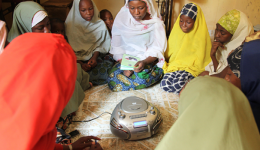Media Selection
The most successful demand generation interventions are those that are grounded in sound behavioral and communication theory. But while theory and frameworks are commonly used to guide the design of health messaging content, the same is not always the case for the selection of the media through which those messages are conveyed.


 This website is made possible by the support of the American People through the
This website is made possible by the support of the American People through the